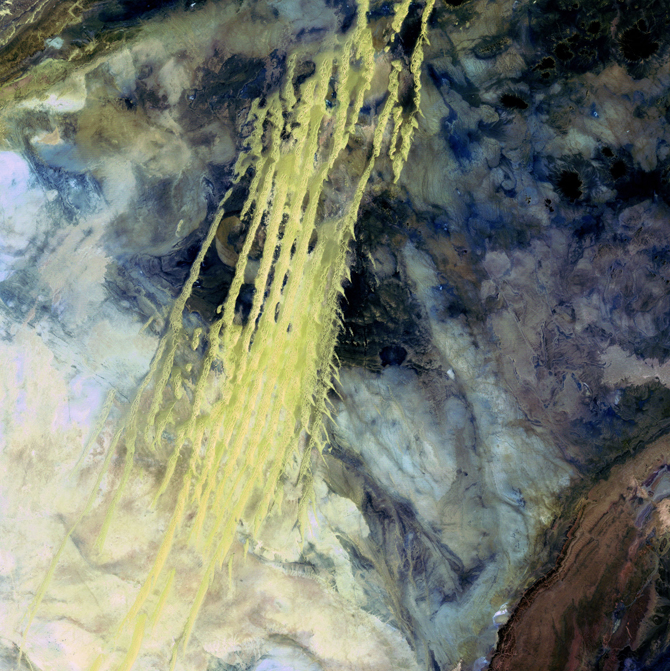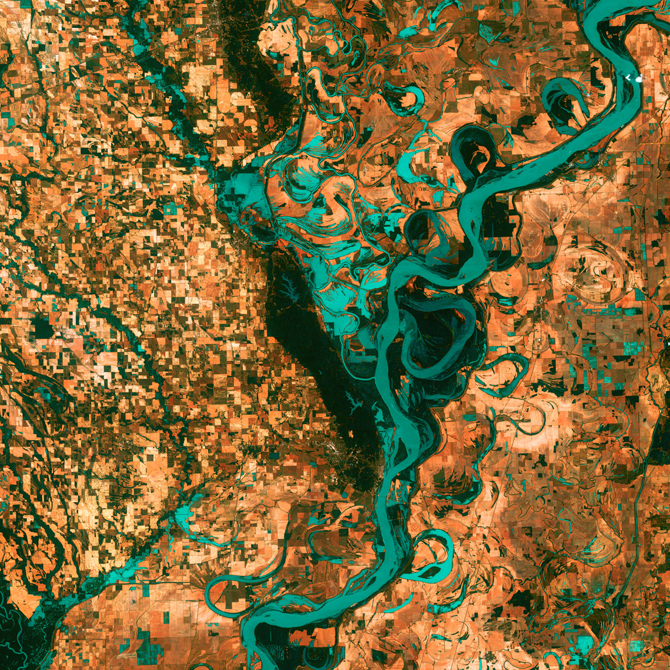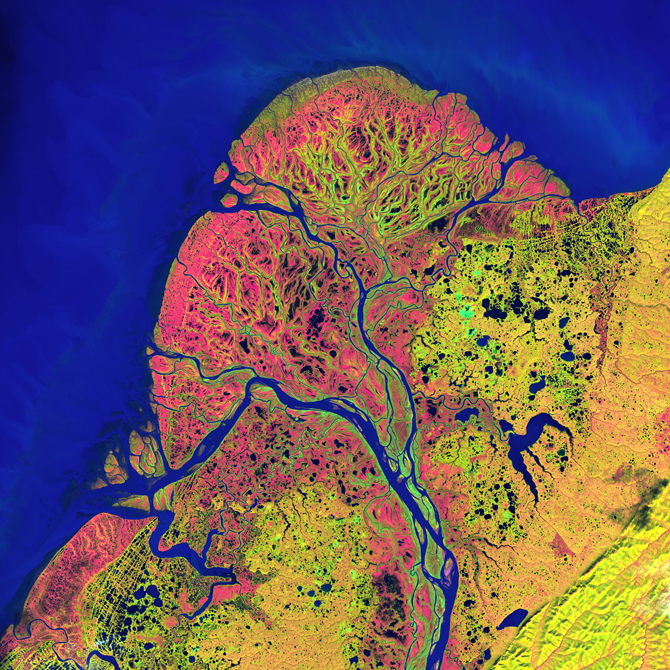
Images: Earth as Art Contest Winners
Fifth place

To celebrate 40 years of the Landsat Earth-observing program, NASA and the U.S. Geological Survey invited voters to pick their favorite images from 120 of the best photos the mission's satellites have snapped. Here are the five top winners.
The scary face in this image is actually inundated patches of shallow Lake Eyre (pronounced "air") in the desert country of northern South Australia. An ephemeral feature of this flat, parched landscape, Lake Eyre is Australia's largest lake when it's full. However in the last 150 years, it has filled completely only three times.
Fourth place

What look like pale yellow paint streaks slashing through a mosaic of mottled colors are ridges of wind-blown sand that make up Erg Iguidi, an area of ever-shifting sand dunes extending from Algeria into Mauritania in northwestern Africa. Erg Iguidi is one of several Saharan ergs, or sand seas, where individual dunes are often nearly a third of a mile (more than 500 meters)in both width and height.
Third place

Small, blocky shapes of towns, fields, and pastures surround the graceful swirls and whorls of the Mississippi River, the largest river system in North America. Countless oxbow lakes and cutoffs accompany the meandering river south of Memphis, Tennessee, on the border between Arkansas and Mississippi.
Second place

Countless lakes, sloughs, and ponds are scattered throughout this scene of the Yukon Delta in southwest Alaska. One of the largest river deltas in the world, and protected as part of the Yukon Delta National Wildlife Refuge, the river's sinuous waterways seem like blood vessels branching out to enclose an organ.
First place

In the style of Van Gogh's painting "Starry Night," massive congregations of greenish phytoplankton swirl in the dark water around Gotland, a Swedish island in the Baltic Sea. Population explosions, or blooms, of phytoplankton, like the one shown here, occur when deep currents bring nutrients up to sunlit surface waters, fueling the growth and reproduction of these tiny plants.
Get the world’s most fascinating discoveries delivered straight to your inbox.
 Live Science Plus
Live Science Plus






